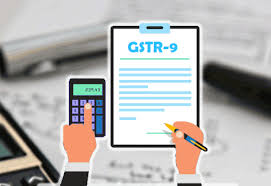The fever of cricket is on as the matches for World Cup, 2019 have started. But those involved in commerce and industry are busy in ‘Matching’ books for annual return. GSTR-9 has been leading topic of discussion from it’s very inception. GSTR-9 has been a ‘puzzle’ and in this article attempt is being made to resolve such puzzle.
Relevant GST Forms:
 GSTR 9: It is a single return which needs to be filed by all the registered taxpayers annually. It consists of details of supplies made and received during the year. It consolidates the information furnished in the monthly or quarterly returns during the year.
GSTR 9: It is a single return which needs to be filed by all the registered taxpayers annually. It consists of details of supplies made and received during the year. It consolidates the information furnished in the monthly or quarterly returns during the year.
GSTR-9A: This return is to be filed by taxpayers registered under composition scheme. It is a summary of all quarterly returns previously filed by the composition taxpayer.
GSTR-9B: Electronic Commerce Operator (ECO) filing return under GSTR-8 are required to file GSTR-9B. (Not Applicable for F.Y. 2017-18 as provisions were not Operative).
GSTR-9C: Every registered person whose aggregate turnover during a financial year exceeds Rs. 2 Crores shall get his accounts audited and he shall furnish copy of audited annual accounts and a reconciliation statement.
Due Date:
Due date for filing annual return is 30 June, 2019.
Applicability of Annual Return:
GSTR-9 is applicable to all except:
- Input Service Distributor
- A person required to deduct TDS
- Tax collector u/s 52
- Casual Taxable Person
- Non-Resident Taxable Person
- Composition Taxable Person
Note: Even a person registered under GST but having no transactions during the year is required to file Annual Return.
Consequences of failure to submit the annual return:
- Notice to defaulters: Notice shall be issued requiring defaulter to furnish such return within 15 days in such form and manner as may be prescribed.
- Late Fee for delayed filing – The amount shall be maximum of the following:
- 5% of the taxpayer turnover in the state or union territory or,
- Rs 100 for CGST and Rs 100 for SGST per day.
- General Penalty for Contravention of Provisions: Penalty upto Rs. 25000/- for CGST & Rs. 25000/- for SGST could be levied.
Revision of GSTR-9:
GSTR-9 cannot be revised and thus taxpayer has to file GSTR-9 with due care.
Introduction to GSTR-9
GSTR 9 consists of six parts and nineteen tables as listed below:
PART I: This part of form consist of basic details like financial year, GSTIN, trade and legal name.
PART II: Here taxpayer has to provide details of outward and inward supplies made during the financial year
PART III: In this part, details of ITC for the financial year are to be given.
PART IV: Details of tax paid as declared in returns filed during the financial year is provided in this part
PART V: The summary of amendment or omission entries belonging to previous FY but reported in Current FY would be declared in this part.
PART VI: Particulars of Demands & Refunds are to be reported in this part.
To know more about GSTR-9, read upcoming article in which details of outward and inward supplies are unveiled.




